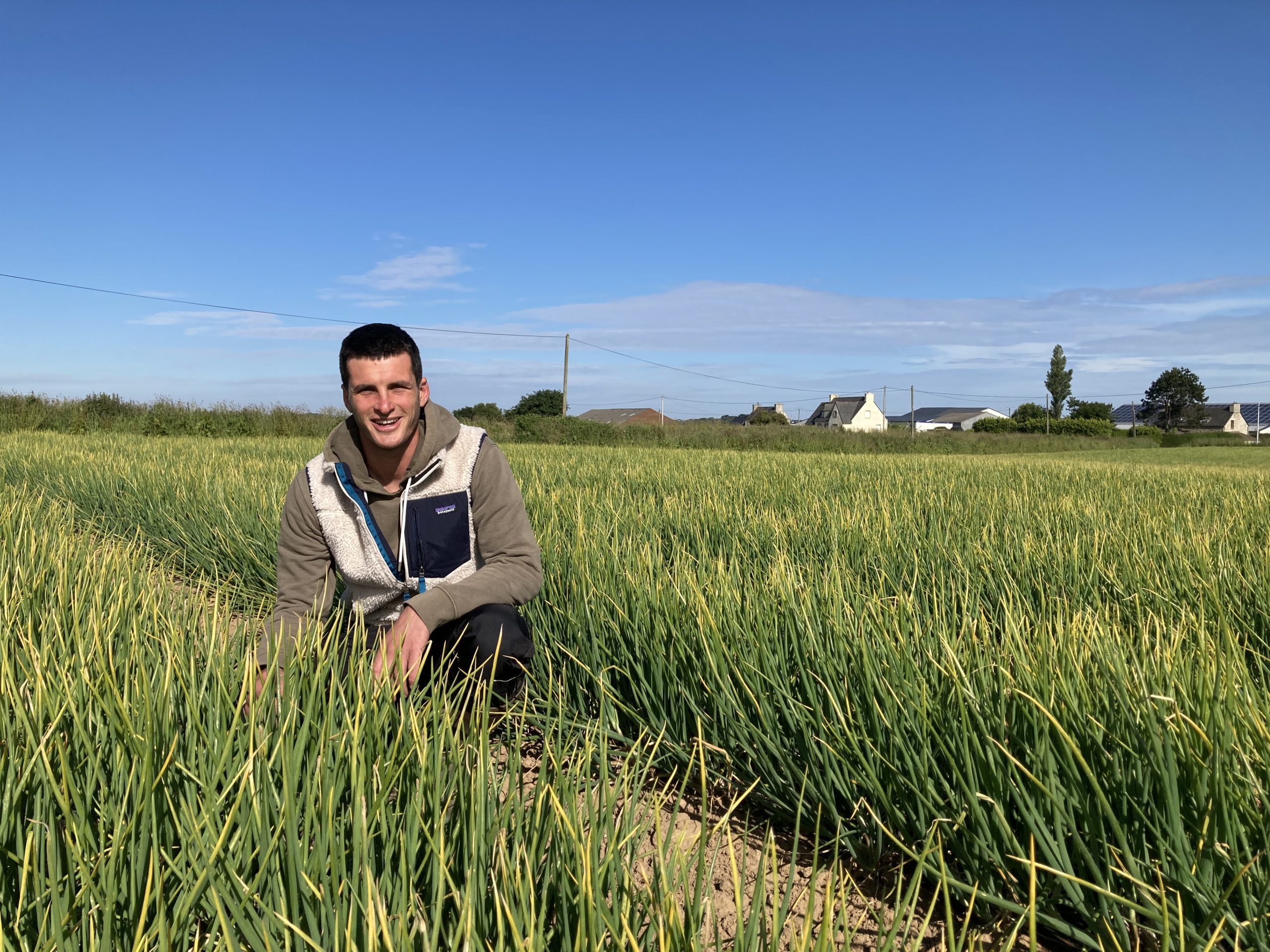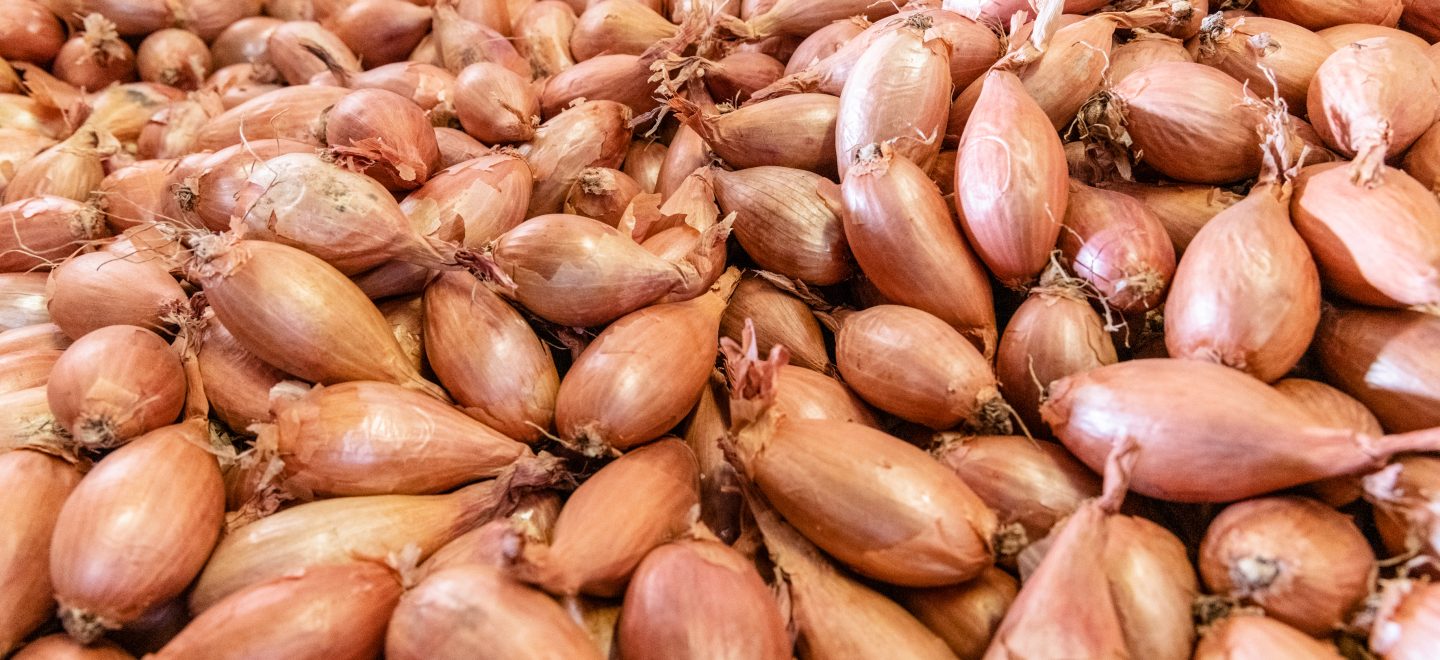Florian Le Saint, a tall, dark-haired man in his thirties, welcomes us early in the morning to his farm in Plouzévédé, a few kilometers from Pouliquen’s headquarters. Here he grows about ten varieties of vegetables, organically, on a small hundred hectares, including meadows and watering holes. It’s mid-July, the shallot harvest is over, and the cabbage and broccoli planting is in full swing.
In 2016, Florian, son of a producer, took over the farm from a neighboring producer who was retiring. Today Florian has four full-time employees, including his mother, as well as teams of seasonal workers who help with planting and harvesting.
Organic shallots: 100% Molène
Florian only grows Molène, a variety developed by the OBS, the Breton Breeding Organization. This variety was created to allow the development of organic shallot cultivation and therefore without phytosanitary products. It is notably resistant to mildew, a series of cryptogamic diseases that can cause serious damage to plants. This variety allows the harvest of 15 tons of shallots per hectare, an interesting yield in organic farming.
Growing traditional organic shallots requires a lot of work and equipment, especially for weeding, which is done manually.
“It takes 250 hours of work per hectare, or 3000 hours for the whole farm. This year, just weeding the 12 and a half hectares planted took 625 hours.”
Florian Le Saint, organic shallot producer.
Growing traditional shallots organically: a subtly designed technical itinerary
In organic farming, shallots are planted during the first two weeks of February. The hole drilled in the tarpaulin is adapted to the size of the bulb, in order to avoid the growth of weeds around the shallot. This special attention at the time of planting makes it possible to limit weeding time thereafter.
In addition to manual weeding, three to four passes of hoeing should be carried out between the allium rows. This hoeing is done bed by bed, in other words, row by row. Harvesting is done at the end of June or beginning of July, depending on the weather conditions. The shallots are then left to dry in the field for about ten days.
“This is the time it takes for the sap to sink back into the bulb. Drying is better in the field than in the fridge.”
Two to three weeks after harvesting, the shallots will undergo thermotherapy. They are kept for seven days at 30 to 35°C. From 1 October onwards, the fridges will be lowered to zero degrees. This is a specificity of the traditional organic shallot.
A father’s green streak
Florian’s father converted to organic farming in 1996. He was one of the first producers to create the organic section of the cooperative SICA (Prince de Bretagne), a regional section set up at the time with member producers from other departments. Over the years, Florian has seen that it is possible to produce quality vegetables and achieve good yields organically. When he set up his farm, the question did not arise. His farm would either be organic or wouldn’t exist.
“The planet is burning and every day when I go to work I feel like I am doing something for the planet. I think this way of production is more substaminale. »
Like any organic farm, Florian does not use any mineral fertilizer or phytosanitary products. He has a BTS (Higher Technician’s Certificate) in agriculture and is very interested in agronomy and working the soil.
“We feed our soil which feeds the plant. There is a strong rotation on our plots. We grow about ten varieties of vegetables, not counting the cover crops. In my career, I will only see shallots four or five times in the same plot.”
The farm’s 100 hectares also include permanent grassland and ponds, which ensure respect for biodiversity.
Florian Le Saint’s commitment does not stop at his farm. In fact, he is also the shallot referent within the SICA, one of Prince de Bretagne’s cooperatives. At 31 years old, he intends to promote organic farming for many years to come.

